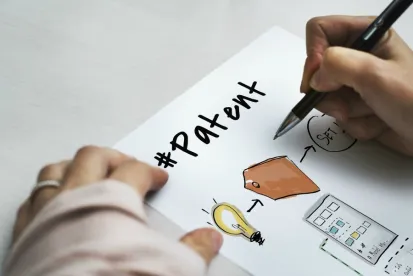In my almost 17 years of practice before the United States Patent and Trademark Office ("PTO"), by far the most common telephone call I receive from inventors is a frantic inquiry about an Office Action received from the PTO reporting that all of the inventor's claims have been rejected as not patentable.
My advice? Breathe!
Receiving a rejection of all your pending claims is not uncommon and generally is not an indication as to whether your patent application will issue as a patent. Below are various points I use to help inventors understand the parts of an Office Action, the objections and rejections in the Office Action, and how to evaluate the references cited.
The Office Action
An Office Action usually consists of the following:
- Office Action Summary Page: The first page of the Office Action summarizes the status of the Office Action, the claims, the application papers, and the priority claim. You can ignore this page.
- Detailed Action: The Detailed Action includes the substantive objections and rejections set out in the Office Action. In particular, an Office Action can "object" to the various portions of your patent application, including the specification, claims, and figures and/or can "reject" your claims based on art or on format/content.
- Objections:
- Objections to the specification, claims, and figures can generally be addressed with a minor amendment or submission and, therefore, are typically withdrawn by the Examiner.
- Rejections:
- Prior Art Rejections: Prior art rejections can be based on a single reference, termed "anticipation" under 35 U.S.C. Section 102, or can be based on two or more references, termed "obviousness" under 35 U.S.C. Section 103. References can be patents, patent publications, or non-patent literature. In some instances the references cited do not actually disclose the recitations of the pending claims. In such a case, as the Applicant, you only need to provide arguments illustrating why the references fail to disclose the recitations of the claims. In other instances, the claims need to be amended to define around the cited references.
- Form Rejections: Claims can be rejected as having subject matter issues (35 U.S.C. Section 101) or definiteness issues (35 U.S.C. Section 112). These rejections can usually be addressed by amendment and/or argument. These arguments may be very technical and dependent on the specific claim's language in the particular patent application.
How to Decipher an Office Action
- Focus on the Claim Language: It does not matter that the prior art discloses something completely different from your invention if your claims do not reflect the differences. In other words, if your claims are written so broadly that the prior art discloses the recitations of your claims "when given their broadest interpretation," your claims must be amended to reflect the differences. The good news is that if your inventions are very different, your amendments should overcome the rejection.
- The Whole Reference is Relevant: The biggest mistake you can make when looking at a rejection in an Office Action is to focus on the claims of a cited patent. Although the Office Action and Response will focus on the claims of your pending application, the cited reference is viewed in its entirety. Thus, no matter where the disclosure resides in the cited reference —background, specification, claims, figures etc.— if the patent predates your application filing date, the disclosure can be used to reject your claims.
- Focus on the Independent Claims: If you can show that the cited reference(s) fail to disclose or suggest at least one recitation of your independent claim, your dependent claims are patentable by virtue of the patentability of your independent base claims from which they depend. Your dependent claims can also be argued separately, but it is not necessary to fully respond to the Office Action.
Summary
Keep the faith. Rejection of all the claims of a pending application in an Office Action is common and is not a foreshadowing of a doomed patent. The negotiation process between the Examiner and the Applicant is a necessary part of obtaining a strong patent that will withstand an attack by a competitor. You want the Examiner to fully understand your invention and do a competent job of searching. If the Examiner does a poor job, your patent will not be strong and may not withstand attack.



 />i
/>i
